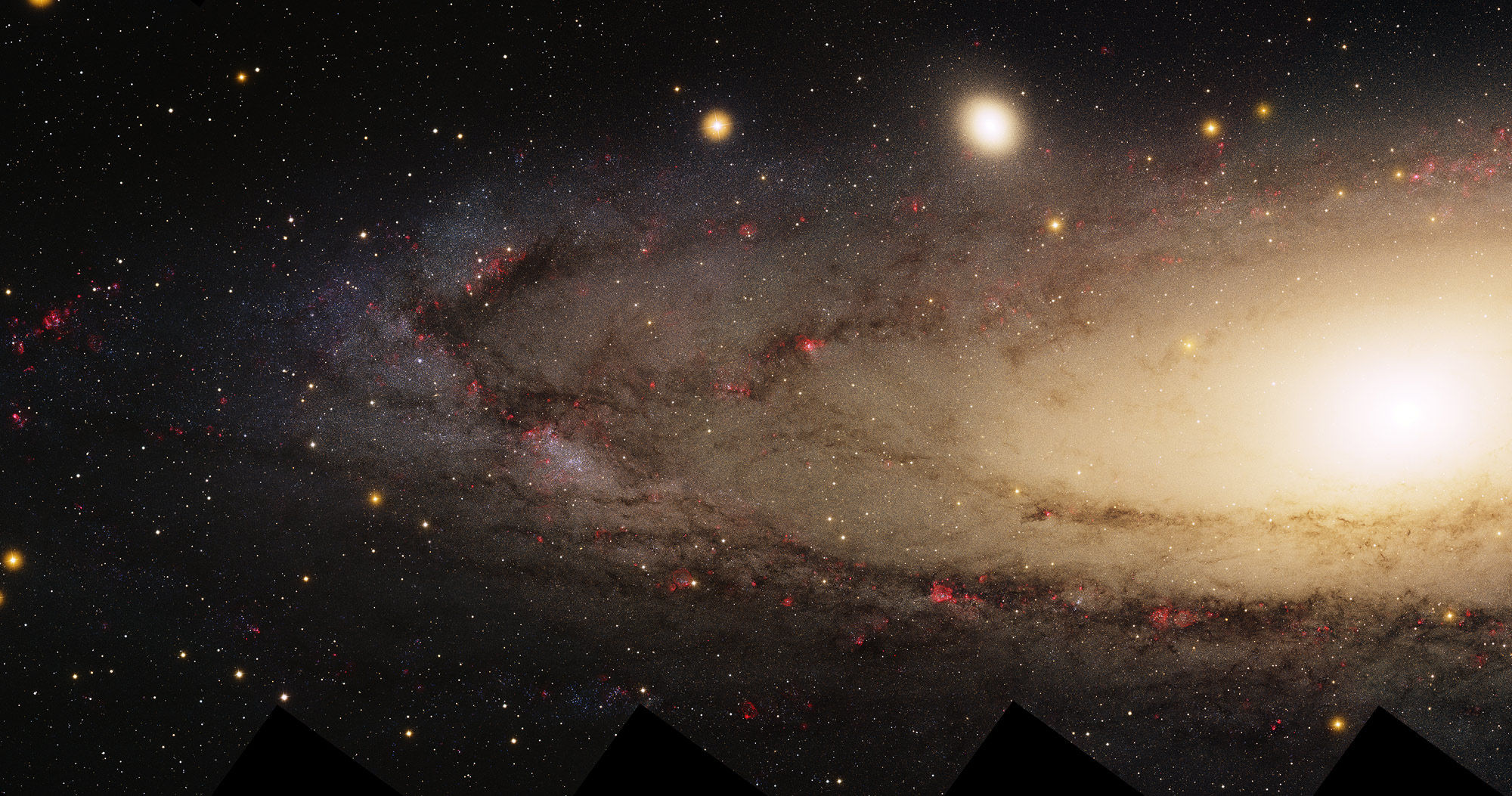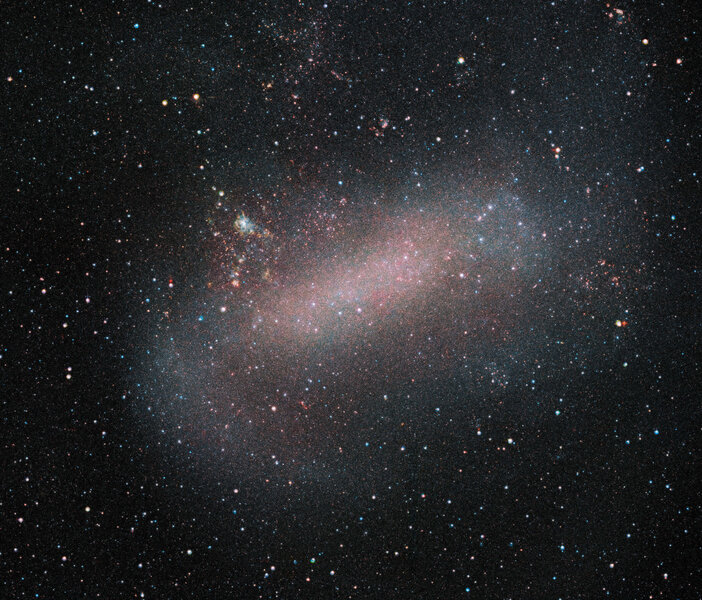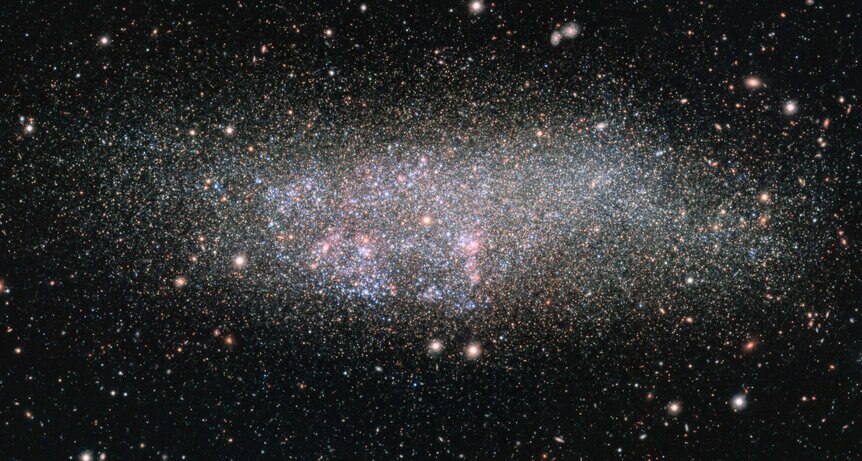Create a free profile to get unlimited access to exclusive videos, sweepstakes, and more!
The motions of 66 nearby galaxies have now been reliably measured. Not stars. *Galaxies*.

Everything in space moves.
Planets orbit stars, moons circle planets, stars orbit inside galaxies. Even galaxies themselves — those immense structures of billions of stars, gas clouds, dark matter, and dust — all move through space, their trajectories determined by the force of gravity of other galaxies around them.
Because these objects are all so terribly distant from us, they appear motionless in the sky, unchanging. But, over sufficient time, the stars can be seen to move. Astronomers call this proper motion (meaning a motion across the sky due to the star's actual movement in space), and it was Edmund Halley (of comet fame) who first noticed that some bright stars didn't appear to be in the same place in the sky he saw versus what was on the maps used by ancient astronomers.
The proper motions of stars are now measured routinely. We have big telescopes, accurate images, and a long baseline of time to see this movement, tiny as it may be. A huge leap in this field was provided by the ESA's Gaia satellite, which orbits the Sun about 1.5 million kilometers out from Earth's orbit. It scans the entire sky, measuring the positions, motions, and colors of well over a billion objects in the sky. Because of its phenomenal accuracy (and long time baseline; the new data release covers 34 months of observations) it has revealed a vast wealth of information about the structure of our Milky Way galaxy and the motions of the stars inside it.
But… the Milky Way is part of a small clutch of galaxies called the Local Group, roughly ten million light years across. The biggest and most massive members are us and the Andromeda Galaxy, with dozens of smaller galaxies as well. These constituent galaxies are so far away that their motions are incredibly tiny. Still, over the years, Hubble observations of the Andromeda Galaxy have confirmed it is moving toward us and we will eventually collide. Also, two biggish satellites of the Milky Way, the Large and Small Magellanic Clouds, are close enough that their motions have been measured as well.
But what of all those dwarf galaxies in the Local Group? If you had asked me yesterday, I'd have said their motions are too small and they are too far away from us to measure. But I'd have been wrong.
A paper recently published by a team of astronomers used Gaia to investigate these galaxies. They looked at stars in 74 dwarf galaxies in the Local Group (which includes a few whose status in the Group is unclear). Incredibly, they found what they consider to be reliable motions for 66 of them. Most are within 1.5 million light years of the Milky Way, but some are as far as 4.5 million light years from us.
Doing this is painstaking work. First, we are inside the Milky Way, so when you look toward any particular galaxy outside ours, there are local stars in the way. Sometimes it's easy to know which galaxy they belong to, but for most it's not. They used various schemes to figure that out (for example, looking at the colors and ages of stars to see if they make sense for the host galaxy), and were able to get enough stars in these galaxies to see the motions over the 34 months covered by the Gaia observations.
The results from this work are a treasure trove for astronomers. For example, they found that six of these galaxies appear to be physically linked (that is, orbiting or being influenced by) the Large Magellanic Cloud. Given that this is a satellite of the Milky Way, that makes these smaller galaxies satellites of satellites! Cool.
It gets better. The motions are not just the speed of these objects but also the direction. Knowing the distance to these galaxies and the mass of the Milky Way, the past and future positions of the galaxies can be calculated as well (like how we can predict where planets in our solar system will be given their motion around the Sun due to the Sun's gravity, which depends on its mass). They had to include the mass of the Large Magellanic Cloud as well, since it has roughly 10% as much mass as our galaxy, to be accurate.
The mass of the Milky Way isn't well known, so they used two values, 900 billion and 1.6 trillion times the mass of the Sun. They were able then to get preliminary orbits for the Milky Way dwarf galaxy satellites, and find that some are not bound to our galaxy — so they're not satellites at all — and will eventually leave our vicinity. They found some plunge through the disk of the Milky Way within a few tens of thousands of light years from the center, and that those on orbits that get closer to the Milky Way center tend to be smaller than galaxies that keep their distance. This is likely due to the huge gravity of the Milky Way stripping stars out of ones that get too close.
The science of this will be extremely interesting to astronomers, and as Gaia keeps observing the sky the time baseline will get longer, and the measurements more accurate.
But that's not what amazes me, honestly. What has my head spinning is that this can be done at all. The stars we see are close to us, relatively speaking, just trillions to a few quadrillion kilometers away. Some of these galaxies are 45 quintillion kilometers from us — 4.5 x 1018 km! Being able to directly see the motions of the stars in those galaxies as the galaxies themselves move in response to the Milky Way's gravity… it's almost absurd. Yet here we are.
It seems like magic, but it's not. It's science. And, like those galaxies, it has a speed and direction. While it may sometimes be slow, and the direction sometimes veers here and there, over time science makes its way toward truth, revealing the entire Universe to us along the way.
Tip o' the dew shield to astronomer Ronald Drimmel, who tweeted about this paper.





























